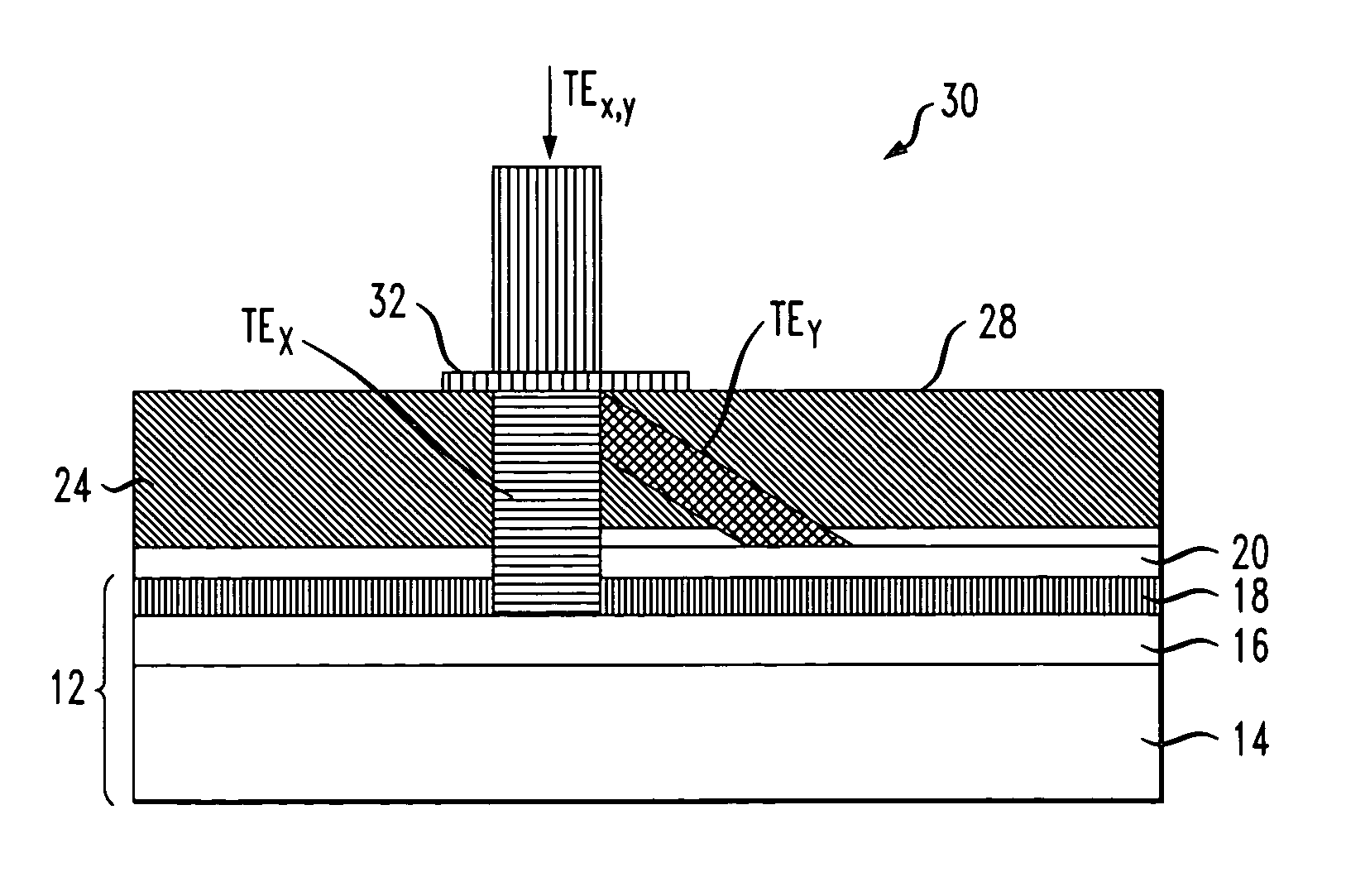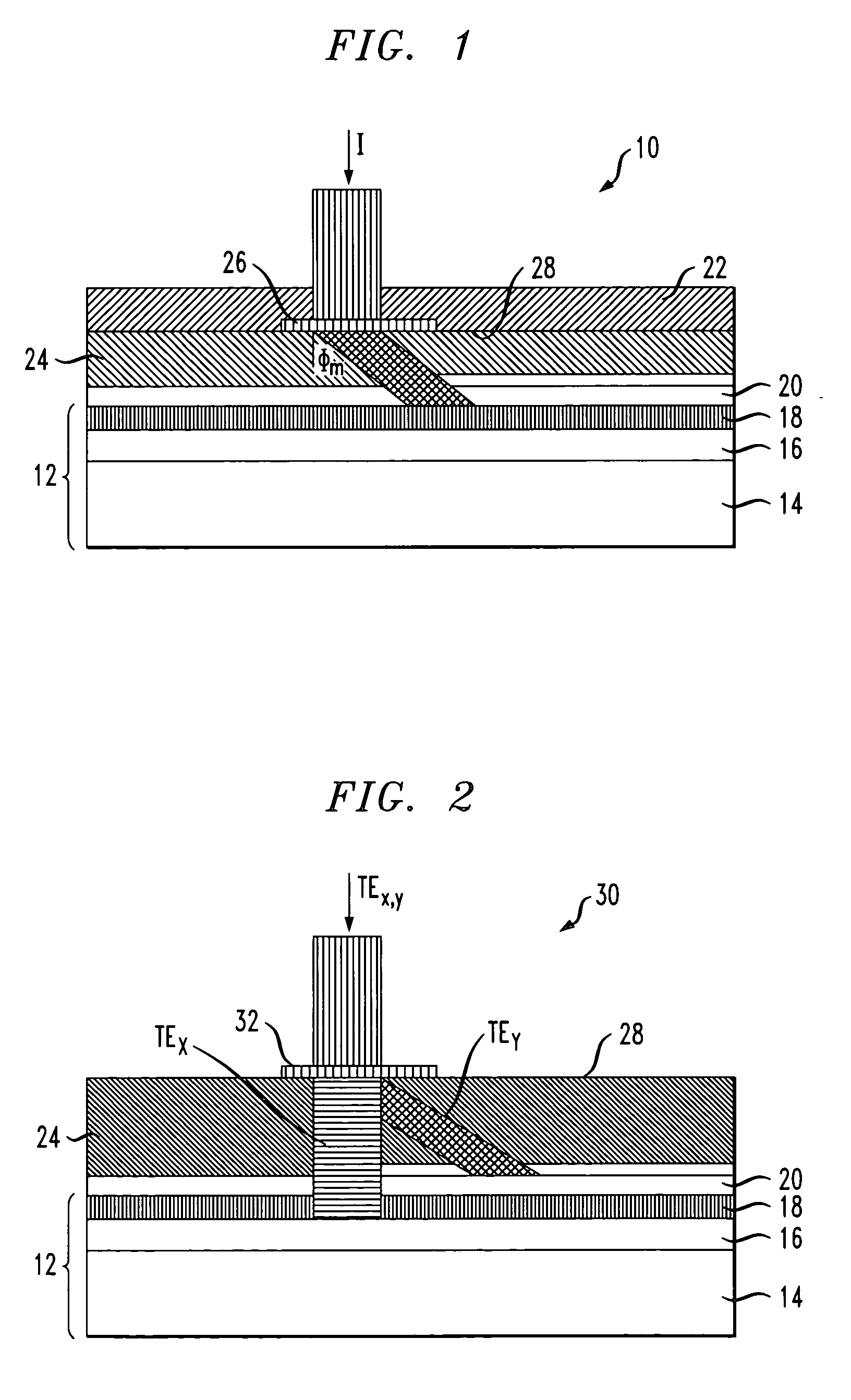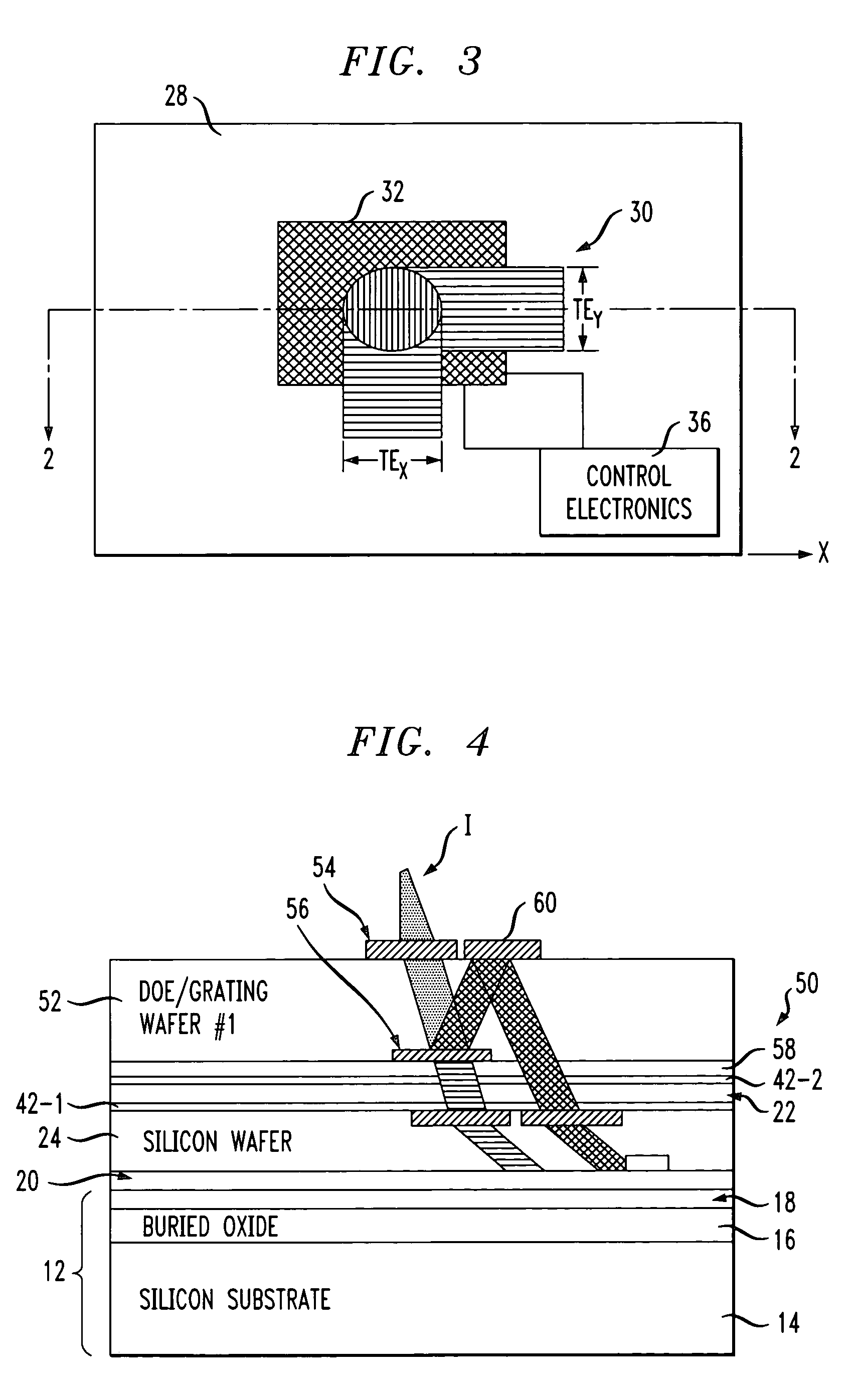Liquid crystal grating coupling
- Summary
- Abstract
- Description
- Claims
- Application Information
AI Technical Summary
Benefits of technology
Problems solved by technology
Method used
Image
Examples
Embodiment Construction
[0022] Materials classified as liquid crystals are typically liquid at high temperatures and solid at low temperatures, but in the intermediate temperature range they display properties of both. The essential feature of a liquid crystal is the long, rod-like molecular structure. The molecules will align in the presence of an electric field, where the alignment is the result of the anisotropic dielectric constant (refractive index) characteristic of liquid crystals. In accordance with the present invention, these attributes of liquid crystals are capitalized on to provide an input / output coupling arrangement that is “tunable” so as to accommodate for different input wavelengths, different incident angles, and the like.
[0023] In particular, most liquid crystal materials exhibit a refractive index in the range of 1.3 to 2.0. It has been found that a change in the index value on the order of 0.2 (i.e., Δn=0.2) will correspond to providing a coupling angle control on the order of 6.5°. ...
PUM
 Login to View More
Login to View More Abstract
Description
Claims
Application Information
 Login to View More
Login to View More - R&D
- Intellectual Property
- Life Sciences
- Materials
- Tech Scout
- Unparalleled Data Quality
- Higher Quality Content
- 60% Fewer Hallucinations
Browse by: Latest US Patents, China's latest patents, Technical Efficacy Thesaurus, Application Domain, Technology Topic, Popular Technical Reports.
© 2025 PatSnap. All rights reserved.Legal|Privacy policy|Modern Slavery Act Transparency Statement|Sitemap|About US| Contact US: help@patsnap.com



